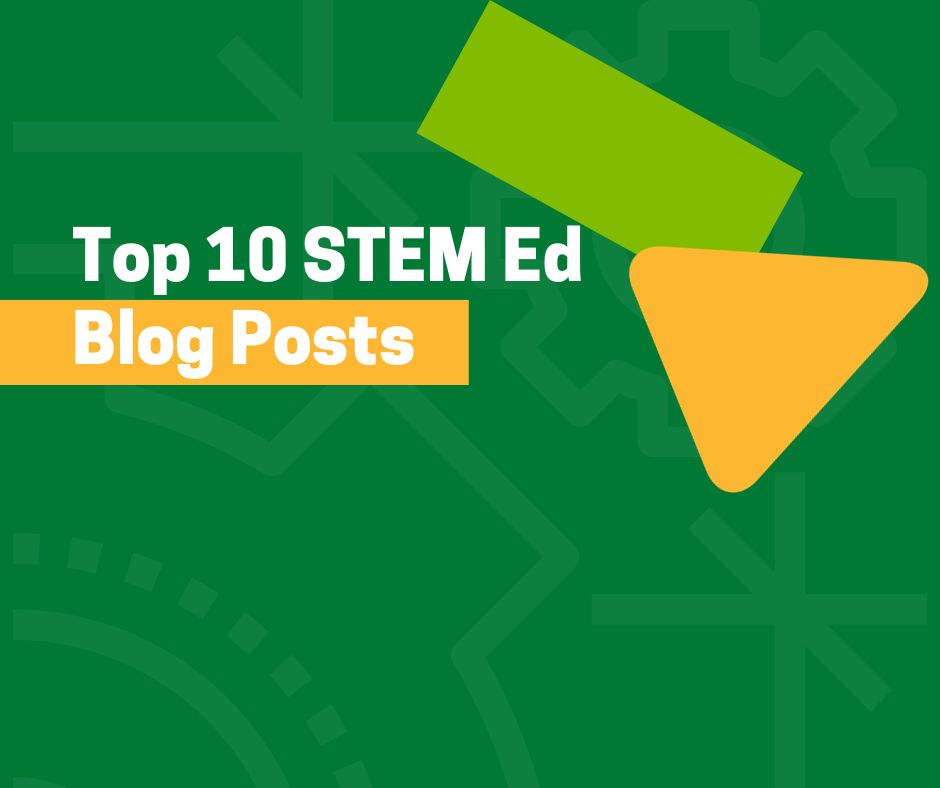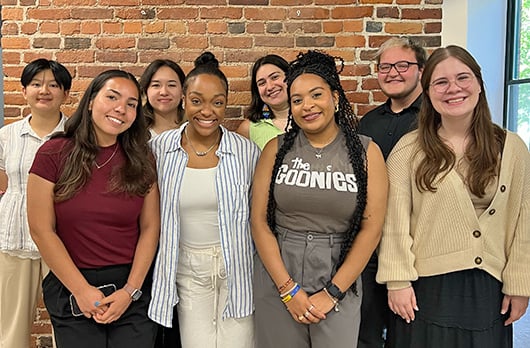TERC Blog
STEM Workforce Stories for Adolescents Who Are Deaf or Hard of Hearing
The STEM WORKFORCE STORIES (SWS) are career stories told by the deaf or hard of hearing STEM professionals depicted on the following pages. They were researched and developed for deaf or hard of hearing adolescents for use in out-of-school settings. The purpose of the stories is threefold: to contribute to audience members’ interest in STEM, to generate career awareness, and to recognize that they might, as other professionals who are deaf or hard of hearing have done, pursue and succeed in a STEM career.
Why Are STEM Career Stories Needed?
While progress has been made in broadening participation of underrepresented groups in STEM, data shows that persons with disabilities remain underrepresented in STEM education and employment compared to their representation in the U.S. population (NCSES 2021). Specifically, individuals with disabilities experience a lower level of career success when compared with their nondisabled peers and are less likely to complete a college education (Bureau of Labor Statistics 2021; Newman et al. 2010).

Workplace barriers include limited expectations; a dearth of opportunities; lack of on-the-job support; workplace discrimination; and, for students who are deaf or hard of hearing, language, and communication issues (Raue & Lewis 2011, Kekelis 2019; Bellman, Burgstahler, & Chudler 2018).
With regard to persons who are deaf or hard of hearing, they very often have little or limited awareness of the range of STEM career opportunities available or of examples of persons who have pursued and succeeded in STEM careers. This situation is eminently clear from comments made by attendees at an NSF-funded Workshop for Emerging Deaf and Hard of Hearing Scientists. A common theme that emerged was that one of the biggest challenges young persons who are deaf or hard of hearing face is not having role models who are members of the STEM workforce (Gallaudet 2012).
Peter Hauser, a psychologist at the Rochester Institute of Technology and who is deaf underscores this when he states: “One big challenge is that young people who are deaf often don’t see a deaf scientist. [T]hey don’t have a role model growing up to help them see that they can actually go in and work in these fields.” (Madhusoodanan 2016). Several studies reveal that seeing other people with disabilities having success in STEM boosts self-confidence (Jenson et al. 2011), and “exposure to deaf role models allows deaf students to identify with successful deaf people and consequently believe they themselves could accomplish goals they previously thought out of their reach” (Interlandi 2005, p.16).
As indicated by a recent small preliminary study that examined influences that motivated or contributed to interest in STEM and STEM careers for deaf and hard of hearing middle and high school students and STEM professionals, this situation has changed little (Vesel, Robillard, & Nave 2021).
Given the lack of available resources, there is a pressing need, that is being addressed with the research and development of the STEM workforce stories, for ways to support the next generation of deaf or hard of hearing members of the STEM workforce.
How Were the Stories Created?
A new and unique multi-step process for recording the videos was developed and implemented. It allowed for the STEM professional, Bridge Multimedia (our organizational partner and content service provider), and the TERC team to be in graphically separate locations. It also enabled the recordings to be made during COVID workplace closures.
> STEP 1
Professionals were given a list of questions to help them shape what they would like to share.
> STEP 2 — PRE-RECORDING
The production team from Bridge Multimedia conducted a technical rehearsal to verify that the interviewee’s computer (in Location A), Internet connection, the video recording environment, and lighting were recording-ready. Two sign language interpreters, the interviewer (in Location B) and the interviewee’s back-translator (in Location C) were part of the process.
> STEP 3 — INTERVIEW RECORDING
A Moderator/Interviewer who was ASL proficient was in Location A, the Interviewee was in Location B, the Interviewee’s ASL back-translator/interpreter were in Location C, a Virtual videographer was in Location D, and individuals from Bridge Multimedia, located in New York City, were available for technical support. The interview process involved making video and audio recordings with the interviewee and interviewer (along with ASL interpreters) in ASL and spoken English on multiple computers over Zoom.
> STEP 4 — MERGING, TRANSCRIPTION AND CREATION OF A ROUGH-CUT VERSION
The Bridge team merged the video and spoken recordings into a single Preliminary Version that included the video and a paper transcript of the English text.
> STEP 5 — REVIEW, EDITING, AND CREATION OF THE FINAL VERSION
The interviewee and TERC team reviewed the Rough-Cut Version. A Final Version was created and reviewed for content, accuracy, and length.
> STEP 6 — DIVISION INTO CHAPTERS AND INTEGRATION OF INTRODUCTORY & SUMMARY INFORMATION
The text was organized into chapters such as Beginnings, Reflections of the Professional, Challenges Encountered, and Advice for the Next Generation. An introductory piece about the STEM professional by a commentator who is ASL proficient and short summaries of what the professional shared were added.
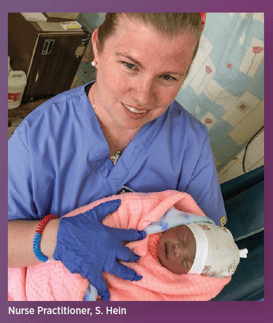
> STEP 7 — IMAGE INTEGRATION
The professionals provided images of them at work, the types of data they use or collect, equipment they use, interactions with colleagues, places they have studied, and of their family, pets, interests, and travels.
> STEP 8 — INTEGRATION OF CLOSED CAPTIONS
Closed captions to enable reading while viewing material presented in ASL, spoken English, or both were incorporated.
> STEP 9 — FINAL MASTERING
Video and audio components were balanced to optimize playback across systems and media formats.
What Universal Design Elements Are Incorporated?
The Web interface and universal design of the stories allow options for personalized use by deaf or hard of hearing viewers as well as those who are hearing. To enable this flexibility, the Web interface incorporates an upper navigation bar that allows users to return to the Stories Home page, Story Selection Options, and Implementation Strategies. Universal Design for Learning (UDL) features (CAST 2018) incorporated into the stories enable viewers to select a story of interest. Once selected, the story, as shown in the figure to the right, will appear based on the user’s chosen preferences—in sign with captions or listened to in English with or without simultaneous sign interpretation or voice overlay. Additional options include the ability to increase or decrease text size, loudness, and contrast, to play and replay all or parts of a story as often as needed, and to select different options at any time while viewing a story. A link from the selected story allows users to submit questions to the professional that emerge from viewing the story. There is also a place for viewing the answer and the accumulating list of questions and answers.

What Have We Learned to Date?
Formative evaluation with members of our audience at the Boys & Girls Club of Lynn and in homes, after being interrupted due to COVID, is now underway. Findings will enable us to learn how adolescents who are deaf or hard of hearing, parents, and club leaders use the stories; what kinds of learning outcomes occur in terms of knowledge of STEM careers, interest in STEM, and pursuing a STEM career. They will also provide insight into dissemination strategies, and changes that would improve the stories. Findings from the evaluation promise to add to the existing knowledge base. They will also inform subsequent development.

In addition to our planned research, review of the stories highlighted a point that is propelling our development in a new direction. They made it clear to us that since persons who are deaf or hard of hearing are not a homogeneous group and have intersectional identities (Medeiros, Thomas, & Wohl 2020; Renken, Scott, Enderle, & Cohen 2021; Dunn & Anderson 2019), one set of resources will not fit all students who are deaf or hard of hearing. Therefore, in addition to stories from professionals of different ages and genders, there is a need for sets of career stories from professionals of different races and ethnicities.
To this end, the team recently hosted a virtual roundtable discussion that included six Black professionals who are deaf. Discussion focused on their experiences in and out of school, the job-seeking process, life on the job, and advice for students. A final universally designed video is being prepared.
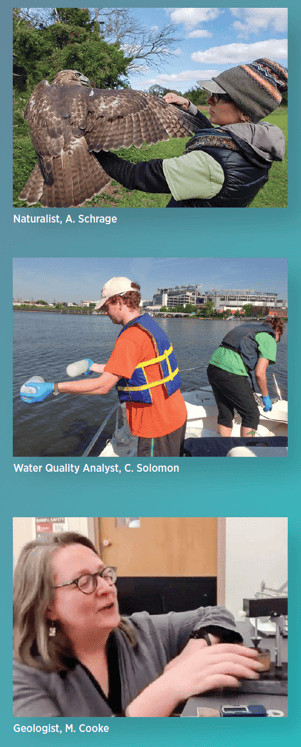
The team will also conduct a research study later in 2022 to look at the effects of Pharmacologist, Ogunjirin’s and Naturalist, Schrage’s career stories when implemented with middle-school Black students who are deaf or hard of hearing and use American Sign Language (ASL) as their primary mode of communication. Outcomes of these efforts will inform directions for a set of career stories from Black deaf or hard of hearing STEM professionals.
WHERE ARE DOWNLOADS AVAILABLE?
The stories are available upon request from signsci.terc.edu/SWS/prototype.html
AUTHORS
Judy Vesel is the Principal Investigator for TERC’s “Signing Math & Science” initiative — funded by NSF and the U.S. Department of Education. The SWS project and related initiatives are part of this body of work. Ms. Vesel has presented her work at many recent conferences including annual meetings of the Center for Advancement of Informal Science Education (CAISE), American Association of Museums (AAM), Assistive Technology Industry Association (ATIA), and Closing the Gap. E-mail: judy_vesel@terc.edu
Tara Robillard is the Lead Researcher for the “Signing Math & Science” initiative at TERC. Her research interests focus on accessibility for students with low-incidence disabilities, especially the use of universally designed technology innovations to improve achievement in mathematics and science of students who are deaf or hard of hearing. E-mail: tara_robillard@terc.edu
REFERENCES
Bellman, S., Burgstahler, S., & Chudler, E. H. (2018). Broadening participation by including more individuals with disabilities in STEM: Promising practices from an engineering research center. American Behavioral Scientist, 62(5), 645-656. Retrieved from: https://journals. sagepub.com/doi/pdf/10.1177/0002764218768864
Bureau of Labor Statistics, U.S. Department of Labor. (2021). Persons with a Disability: Labor Force Characteristics News Release. Washington, DC: U.S. Bureau of Labor Statistics. Retrieved from: https://www.bls.gov/news. release/disabl.html
CAST (2018). Universal Design for Learning Guidelines version 2.2. Retrieved from: http://udlguidelines.cast.org
Dunn, L. M., and G. B. Anderson. (2020). Examining the Intersectionality of Deaf Identity, Race/Ethnicity, and Diversity through a Black Deaf Lens. In Deaf Identities, edited by I. W. Leigh and C. A. O’Brien, 279–304. Oxford: Oxford University Press.
Gallaudet University. (2012). Workshop for emerging deaf and hard of hearing scientists [White Paper]. Retrieved from: http://doit-prod.s.uw.edu/accesscomputing/sites/default/files/WhitePaper- Final_Gallaudet_Emerging_Sci_2_15_13-1.pdf
Interlandi, M. (2005). The effects of exposure to role models on the self-esteem of deaf students. Thesis. Rochester Institute of Technology. Accessed from: https://pdfs.semanticscholar. org/89d2/0e2a8ae7efcd002c865c3eca995037b5f9d3.pdf
Jenson, R. J., Petri, A. N., Day, A. D., Truman, K. Z., & Duffy, K. (2011). Perceptions of self-efficacy among STEM students with disabilities. Journal of Postsecondary Education and Disability, 24(4), 269-283. Retrieved from: https://files.eric.ed.gov/fulltext/EJ966129.pdf
Kekelis, L. (2019). Youth With Disabilities: Untapped STEM Talent. Connected Science Learning Brief Issue 10. Retrieved from: http:// csl.nsta.org/category/connected_science_learning_briefs
Medeiros, K., Thomas, D., & Wohl, A. (2020). Deaf BIPOC: Unpacking the Needs in the Community. ADARA Newsletter. Retrieved from: https://www. tlcdeaf.org/about/news/deaf-bipoc-unpacking-needs-community
Madhusoodanan, J. (2016). Tuning in to deaf needs. Science Careers. Retrieved from: https://www.sciencemag.org/careers/2016/07/tuning-deaf-needs
National Center for Science and Engineering Statistics. 2021. Women, Minorities, and Persons with Disabilities in Science and Engineering: 2021. Special Report NSF 21-321. Alexandria, VA: National Science Foundation. Retrieved from: https://ncses.nsf.gov/wmpd
Newman, L., Wagner, M., Cameto, R., Knokey, A. M., & Shaver, D. (2010). Comparisons across time of the outcomes of youth with disabilities up to 4 years after high school. A report of findings from the National Longitudinal Transition Study (NLTS) and the National Longitudinal Transition Study-2 (NLTS-2) (NCSER 2010-3008). Menlo Park, CA: SRI International. Retrieved from: https://files.eric.ed.gov/fulltext/ED512149.pdf
Raue K, Lewis L. 2011. Students with disabilities at degree-granting postsecondary institutions [National Center for Education Statistics (U.S.) First Look Series]. Washington (DC): U.S. Department of Education. NCES Pub. No. 2011-018. Retrieved from: http://nces.ed.gov/pubs2011/2011018. pdf
Renken, M., Scott, J., Enderle, P., & Cohen, S. (2021). “It’s not a deaf thing, it’s not a black thing; it’s a deaf black thing”: a study of the intersection of adolescents’ deaf, race, and STEM identities. Cultural Studies of Science Education, 1-32. Retrieved from: https://link.springer.com/article/10.1007/ s11422-021-10023-1
Vesel, J., Robillard, T. & Nave, B. (2021). Identifying factors influencing individuals who are deaf or hard of hearing becoming interested in pursuing a STEM career [White Paper]. Retrieved from: https://sign-sci. s3.amazonaws.com/publications/STEM_Careers_White_Paper_FINAL.pdf
CREDITS
Text, pictures, and interface design © TERC, Inc. All rights reserved.
The Signing Workforce Stories are being developed by TERC and funded in part by the National Science Foundation, Grant No. DRL- 2005511. All opinions, findings, conclusions, and recommendations expressed herein are those of the authors and do not necessarily reflect the views of the funders.


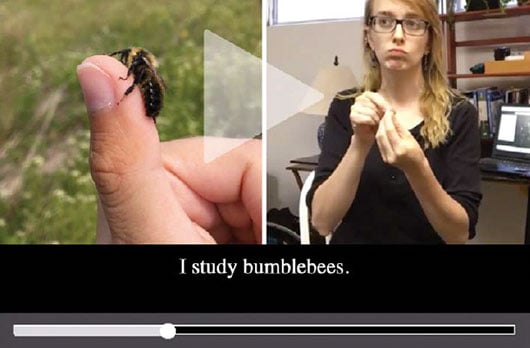




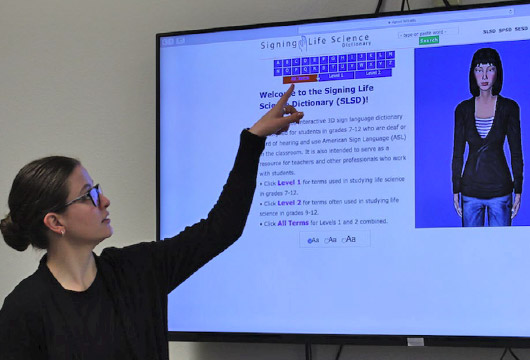
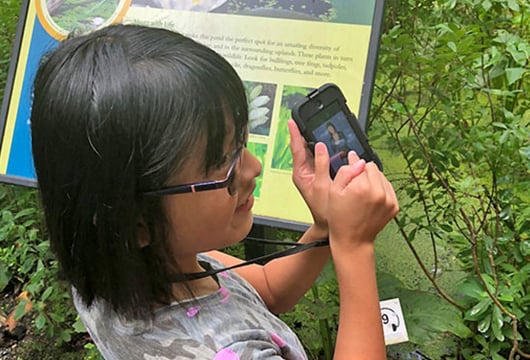
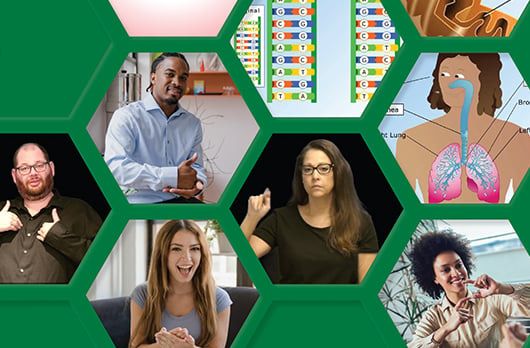
.gif)


